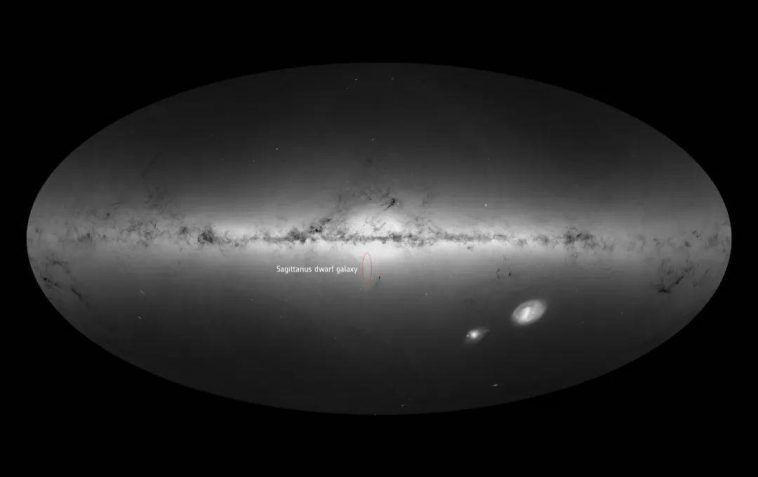“Gaia” galaxy full map. The red circle is the location of the Sagittarius dwarf galaxy. ESA/Gaia/DPAC
Recently, some scholars from Lund University in Sweden found in the “Gaia” stellar database that a large part of the stars in the outer galactic disk of the Milky Way seem to be disturbed by some force and are “trembling”.
The researchers analyzed the motion characteristics of stars in different parts of the galactic disk, and found that many stars have relative velocities in the direction perpendicular to the plane of the galactic disk. As a whole, they are causing a large part of the outer disk of the Milky Way to undulate like waves. Like ripples on the surface of the pool.
The researchers believe that the reason why part of the galactic disk “quake” is because there was once a “giant” that passed by the Milky Way at close range, and its gravitational force disturbed the outer galactic disk.
According to the stellar motion parameters provided by “Gaia”, the researchers calculated the characteristics and flight trajectory of this “giant”, and believed that it may be a small galaxy near the constellation Sagittarius today – the Sagittarius dwarf galaxy (referring to the Sagittarius dwarf galaxy) elliptical galaxies).
Today’s Sagittarius dwarf galaxy is in the process of disintegrating, but it was different 1 to 2 billion years ago, when it was much larger, perhaps 20% of the mass of the Milky Way’s galactic disk.
The Milky Way, which contains hundreds of billions of stars, was born about 13.6 billion years ago. At first it was just a cloud of gas composed mainly of hydrogen and helium, which gradually gave birth to stars and grew by continuously swallowing other galaxies. The Sagittarius dwarf galaxy will also be annexed “in the near” future to become part of the Milky Way.
The “Gaia” probe, which was launched in 2013, has provided people with the proper motion parameters of about 2 billion Milky Way stars and the radial motion parameters of about 33 million Milky Way stars. These data are a “sharp weapon” for astronomers, allowing them to study the dynamics of the Milky Way and its stars in unprecedented ways.




GIPHY App Key not set. Please check settings